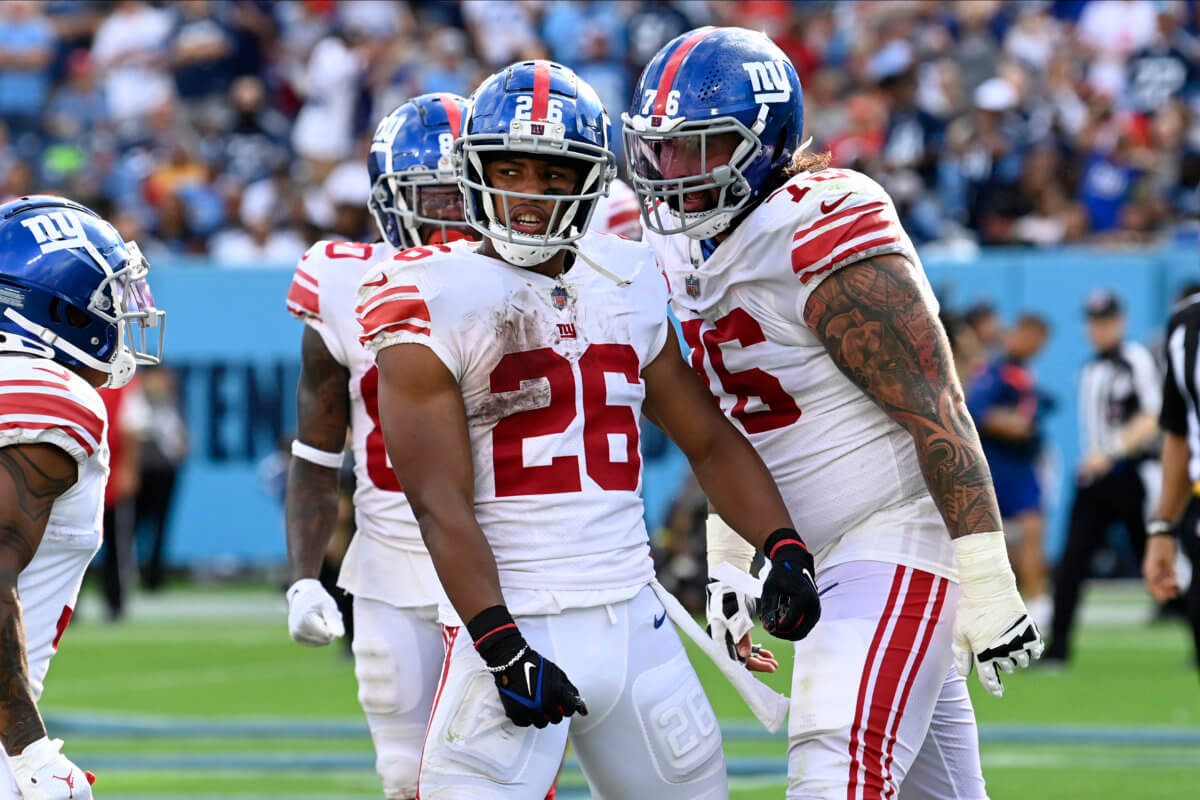New York Giants running back Saquon Barkley (26) celebrates after making a touchdown run against the Tennessee Titans during the second half of an NFL football game Sunday, Sept. 11, 2022, in Nashville.
AP Photo/Mark Zaleski
It’s never good when a top offensive weapon is gruntled on a playoff team. That’s the current state of the New York Giants though as rookies report for training camp.
Saquon Barkley and the Giants were unable to come to terms on a long-term agreement before Monday’s deadline and now the Pro Bowl running back will be required to play the entirety of the 2023 season on the franchise tag. It’s something the former second-overall pick wasn’t too thrilled about following the passing of the 4 pm deadline for franchise-tagged players.
“It is what it is,” Barkley said in a tweet following the news breaking.
But while Barkley is certainly within his right to be frustrated over the lack of a long-term deal, when searching for who is at fault for the impasse, the difficult answer is that no one is in the wrong.
Contract negotiations are always difficult to take sides with. Teams need to stay under the salary cap while players are more than in their right to get as much money as possible in a sport that has a very short shelf life for certain positions. That basic premise has been even harder for running backs over the last few seasons. While important positions like quarterback, wide receiver, and edge rushers have all received a major boost in per-year earnings recently, only the running back position has seen a decrease in value. Now, the average cost of a running back is actually lower than the average cost for kickers.
And it’s not the Giants’, or Barkley’s fault either.
The running back position is one of the few positions that are highly dependent on a completely different group to succeed. If a team has a poor offensive line, the chances of a running back having a good year are slim. Then you add in the…
Read the full article here

Leave a Reply